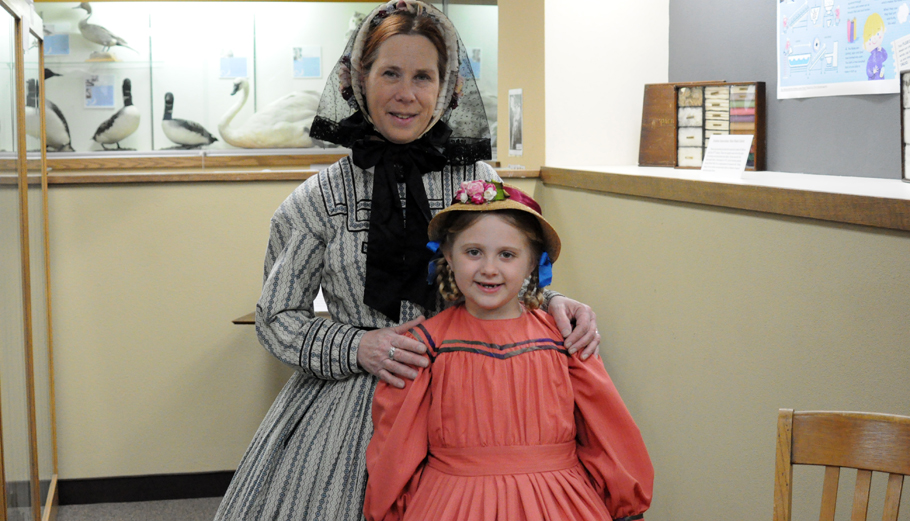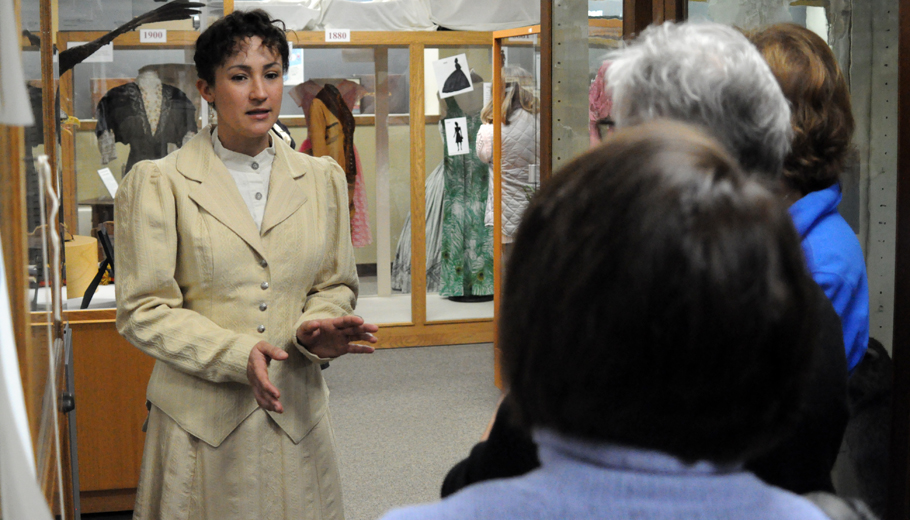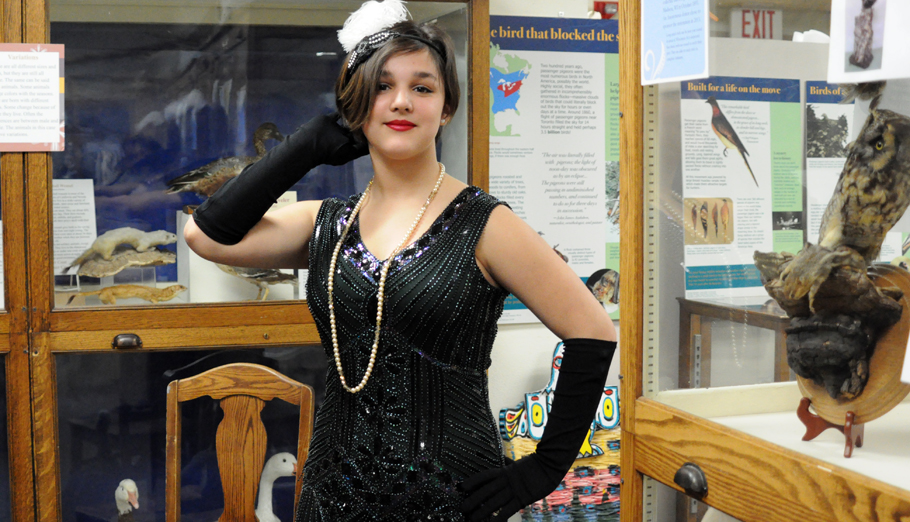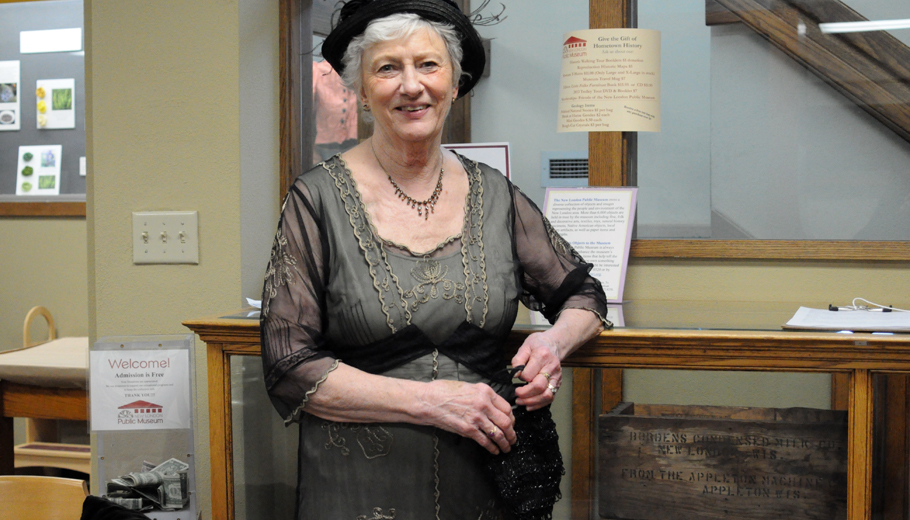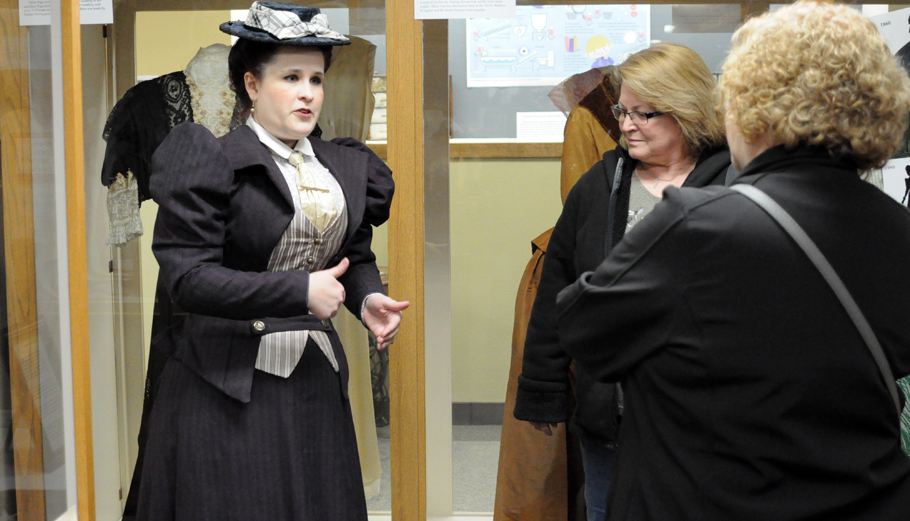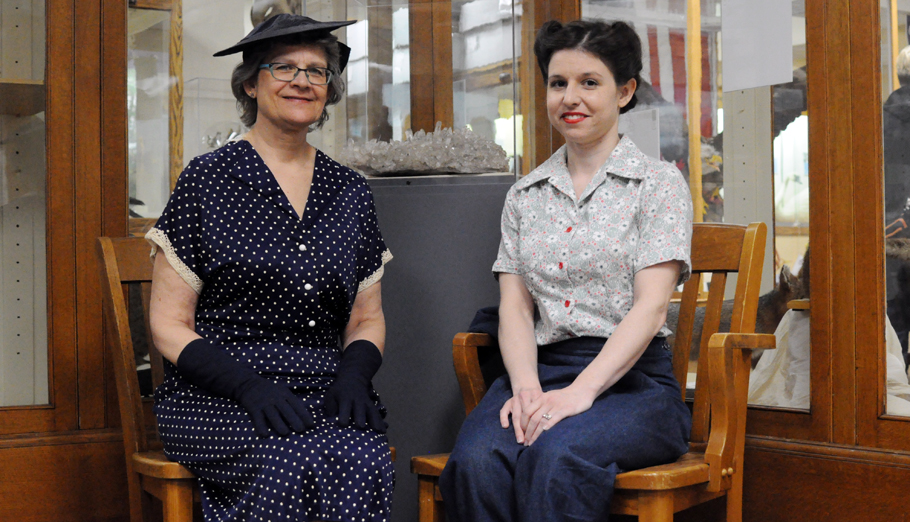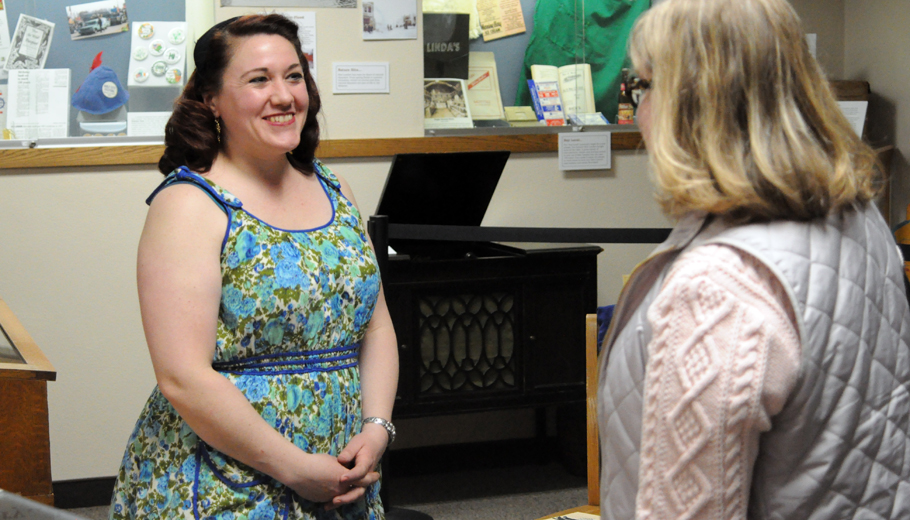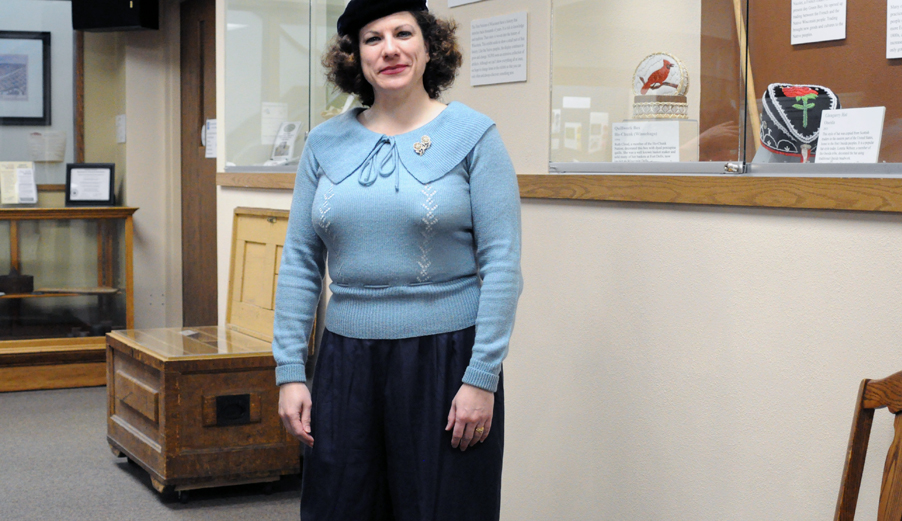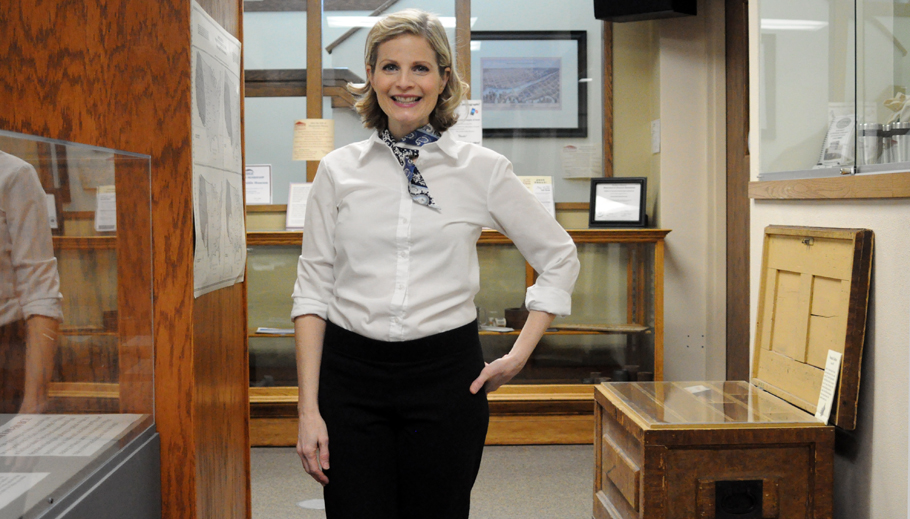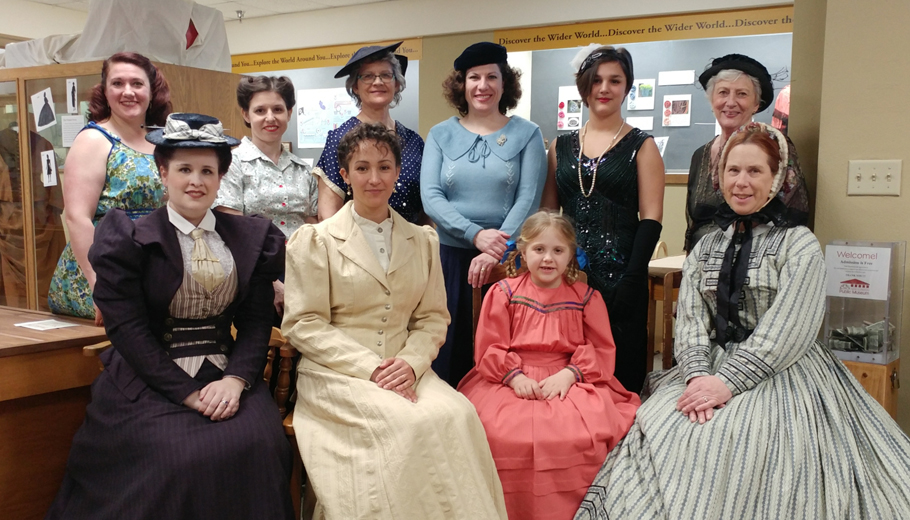Museum highlights histories of styles
By Scott Bellile
When people reflect upon their early years, their go-to memories might be who lived down the block or where their favorite downtown store was.
In all likelihood, their brains skip past details such as what style of clothing people wore.
New London Public Museum offered a refresher Saturday, March 30, as a tie-in to its temporary exhibit called “Fashion!” For one morning, about a dozen living mannequins showcased American women’s fashion from the 1860s through the 1950s, explaining history and how their clothing fit into society.
The exhibit was part of an all-day event called “Film, Fashion and Fun,” which included activities at Mosquito Hill Nature Center, Thern Farm and various downtown businesses.
“Fashion!” served as a lead-in to NLPM’s nighttime screening of a 1939 fashion-centered movie, “The Women,” at Grand Cinema Theatres.
“I wanted people to get that understanding of how women’s fashion changed over the decades, what some of the innovations were as well as some of the influences on [those] changes” before seeing the film, NLPM Director Christine Cross said.
For example, the creation of manmade synthetic fibers such as nylon and polyester in the 20th century offered women alternatives to natural materials like cotton, wool and silk.
“With the synthetic fabrics, you really started to see more wash-and-wear type of clothing,” Cross said. “You didn’t have as much care for your clothing as you used to have to do. You didn’t necessarily have to iron it. So that made kind of a big difference. It was a time-saving type of thing.”
Women’s fashion of the ’30s and ’40s was highly influenced by Hollywood, Cross said. Designers experimented with synthetic fabric in ways that made clothing look higher-end while still remaining affordable to the everyday woman.
“There are cons to some of the manmade fabrics, especially when they were first developed,” Cross said. “And they were maybe not as comfortable, think about double knit polyester from the 1970s, but it really expanded the ability to have more and different types of fabrics, and that really opened a lot of innovation in the fashion industry.”
Women’s wardrobe transformed considerably change between the Civil War and the mid-20th century, as shown by the living mannequins’ outfit choices.
Betsy Urven of Fond du Lac and her 7-year-old granddaughter Alice wore dresses supported by cage hoops to make their outfits appear fuller.
Heather Dawson of Waukesha and Angele Mlsna of Madison sported contrasting 1890s outfits.
Dawson’s was a thick tailor-made suit with poofy mutton sleeves. Mlsna displayed a slimmer activewear skirt designed for games like lawn tennis and croquet.
“We’ve done away with some of the heavier underskirt so there is no longer bustling, so women can have a little more freedom of movement,” Mlsna said of her outfit in character.
Dawson’s and Mlsna’s outfits had something in common underneath: corsets to squeeze in their torsos.
This practice would lessen in the early 20th century, and dresses would become slimmer, too.
Mlsna’s 13-year-old daughter, Gwendolyn, exhibited a memorable style from the ’20s: the flapper. Her party-woman look consisted of a shorter beaded skirt, bobbed hair topped with a feather, makeup and rouge, and no corset.
The 1930s ushered in societal acceptance of women wearing slacks, while dresses became fuller and more brightly colored post-World War II once fabric rations were lifted.
Cross said she enjoyed having the mannequin actors come from all over the state to educate museum visitors.
NLPM hopes to hold a similar live mannequin event next year, possibly with a bigger tie-in to the vintage movie and the history of the film medium as a whole, she said.
Although the live mannequins have gone home, NLPM’s “Fashion!” exhibit continues through May 18.

